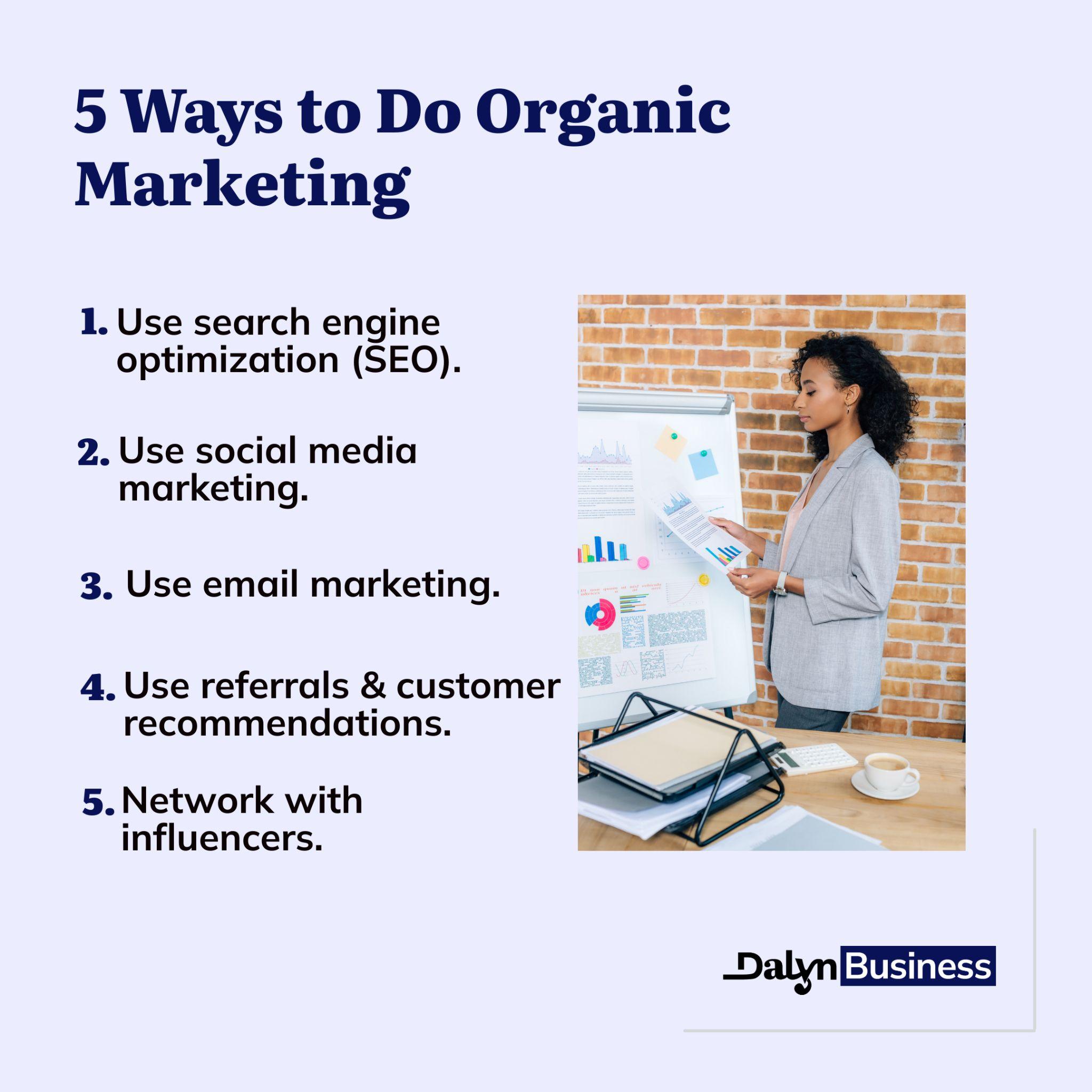Funding is a major part of running a business. You need money for startup costs, operational expenses, technology and equipment, marketing and advertising, expansion and growth, as well as for emergencies. But you may also want to maintain full control of your business without external funding.
But without the financial support of an investor, you’re worried about whether you can succeed in building your business all by yourself. This is why you need to know how to bootstrap a business.
In this article, you’ll learn the best 10 ways to successfully start, grow, and run your small business without external funding.
What does it mean to bootstrap a business?
Bootstrapping a business means starting and running a business without relying on investors, business loans, or other forms of external funding. It means combining your savings, hard work, and creative spirit to build your business. Personal savings can come through money saved from your day job, monthly/quarterly allowances, or family contributions.
Apart from retaining total control of your business, there are several reasons why you might consider bootstrapping your business.
These include:
- To avoid the pressure that comes with meeting the demands and expectations of investors
- To manage your business challenges using cost-effective solutions
- To prioritize profit-making at the early stages of your business.
Whatever your reasons are, it’s possible to start and succeed in your business without hoping for funds outside of yourself.

How to bootstrap a business: 10 effective strategies to follow
Let’s assume you’re a freelance writing business owner, the following are the proven ways to bootstrap your business.
1. Have a financial plan
A financial plan is a comprehensive document that contains your business’s financial data and how you intend to manage and improve it.
It’s a road map that guides you towards your business’s financial growth. This is where you document the money that comes in and goes out of your business, including your profit level.
Charles Schwab, a banking and financial advisor, sees financial planning as “a process designed to help you reach your life and financial goals.”
Your financial plan should have the following components:
- How much money you have at present
- The strategies you’ll use in pricing your products and services
- The expenses you’ll pay for in your business every month
- The number of items you think you can sell per month
- If you offer services, how many customers you can serve per month
- The various strategies you intend to use in managing potential business risks
- The nature of tax to be levied on your business concerning its worth.
It doesn’t mean you must include all this in your financial plan. It comes down to the nature of your business.
For instance, in our freelance writing business example, you can draw a financial plan that has sections to cover how much you have, the strategies you’ll use to price your services, how much expenses you’ll cover every month, and the number of customers you can serve per month. These financial plan sections are enough to guide your freelance writing business.
Why you need a financial plan
Having a financial plan will enable you to:
- Make better financial decisions because you have control over it
- Get insights on opportunities that your competitors don’t know
- Map out your pricing strategies
- Respond and adapt to market changes
- Foresee potential hurdles in your business line and better manage risks.
How to make a financial plan
To make a financial plan,
- Assess your present financial position: This includes your income, profits, liabilities, cash flow, and expenses.
- Define and set your financial goals: You should define the financial goals you want to achieve in your business. Examples include reducing debt and increasing profit generation.
- Budget how you intend to manage your financial resources.
- Consider areas where it’s likely for you to need additional funding.
- Track all aspects of your potential business risks. This will help you draw strategies to manage them better.
- Track your performances using different financial metrics.
- Regularly update your financial plan according to the changing market conditions.

Tools needed for financial planning
There are various automation software that makes financial planning easier, more efficient, and more effective.
While some of these tools are paid, others are free. The table below shows some of the free tools:
| Tools | Uses |
|---|---|
| Google sheet | This is used to create and manage your budget and also track your expenses. |
| Wave | It is used to track your expenses as well as create financial reports. |
| Trello | This is effective in creating and organising your financial goals. It also helps you to track your financial progress. |
| Zoho Books | It is an accounting software that helps in your invoicing. It is also used to track your expenses and create financial reports. |
| Mint | This is a budgeting software that you can use to set your budget. You can use it to document your transactions. |
2. Focus on the things you do best
To focus on the things you’re good at, you should think about your skills and passion and how they can be used to improve your business. For instance, in our freelance writing business example, you should have decent writing skills to help you run it and serve your customers better.
So, if you plan to bootstrap a business, identify your strength by assessing your skills, experience and knowledge. Then prioritise those skills that are super easy for you.

Why should you focus on the things you do best?
Focusing on the things you do best will help you to:
- Reduce operational costs as you do some of the work yourself instead of outsourcing all the tasks
- Allocate your resources to areas that will have the most impact on your business
- Provide high-quality services to your customers
- Capitalise on your strength and use your natural skills, talents and expertise for the growth of your business.
3. Start small
Starting small means that you should establish a smaller version of your intended business. It’s not wise to invest all your savings into your business when starting it. You can start your business with a portion of that savings, and then nurture it to success.
Starting small can mean niching down to a specific industry, not targeting all industries or topics, and then building your client base from there.

Why should you start small?
Starting small will help you to:
- Experiment with your business idea
- Reduce your financial risk
- Gather first-hand business experience
- Establish your business on a strong foundation
- Maximise your resources and time.
4. Focus on making profits
This is about paying more attention to how you’ll generate money from your business. So, instead of thinking of expanding the business, you should be more concerned about how much return on investment (ROI) the business will generate.
Why you should focus on making profits?
By focusing on making profits:
- Your business will have enough money to cover its exposes and continue operating.
- Without profit, it becomes challenging to sustain and grow your business over time.

How to focus on making profits
The following are ways to focus on making profits:
- Centring your business around your target customers’ needs: This will make customers more willing to pay for your offers even when you raise your prices.
- Conducting market research to understand how customers perceive the value of your products or services. This will help you make informed decisions when setting prices to allow for sufficient profit-making.
- Automating your tasks where possible to help reduce operational costs of paying workers. So, instead of hiring and paying people for such tasks, some free or cost-effective tools can take care of them.
Going back to our freelance writing business example, instead of hiring proofreaders for your writing gigs, you can use proofreading software like Grammarly to speed up your editing process and cut the cost of hiring human proofreaders.
5. Keep your day job
If you have an existing job at the time you want to start your business, do not resign yet. Keep your current employment until you stabilise your business.
Keeping your day job:
- Allows you to experiment with and validate your chosen business idea and know how viable it is
- Lets you meet your financial obligations and personal expenses while waiting for your business to grow
- Helps you minimise the financial pressure that comes with waiting for a business to stabilise
- Helps you invest more capital in your business from your salary.
6. Sell services first
Services are those intangible offers that you can provide to customers to solve their problems or meet their specific needs. For example, if you love baking, you can offer a service where you make custom cakes for people celebrating their birthdays or special events. Or, if you’re good at fixing computers, you can provide a service where you help people with their computer problems.

Services include rendering assistance, performing specific tasks, or delivering your expertise to solve a customer’s problem.
Other examples of services include:
- Graphic design
- Freelance editing
- Consulting
- Content writing.
Why you need to sell services first
Some of the advantages that come with selling services first are that:
- It requires little to no capital when compared to physical products. For instance, going back to our freelance writing business example, the capital that’s needed for you to provide freelance writing services to your customers is lower than what it can take you to produce and sell a physical product.
- It enables you to offer high-quality solutions to customers based on your strength. This is because what you sell is based on your expertise. This will, in turn, provide you with a competitive advantage in your line of business.
- It allows you to generate income faster. This is because, to a great extent, you rely on your skills, knowledge, and time to provide your customer with the things they need. You neither spend money to produce the goods that you’ll sell nor spend money to buy materials. So, since the cost of running it is lower when compared to product-based businesses, you get to keep more of the money you earn.
- It helps you test the market without significant upfront investment. This means that you can validate your business idea before making a huge investment in it.

7. Keep your costs low
Keeping your costs low means that you have to minimise your expenses as much as possible. It also means prioritising your budget, looking for cheaper alternatives, and maximising your business resources.
Maximising your business resources means using the limited money and equipment that you have in the best way that will make your business successful. For instance, do not pay for services or things you don’t need and don’t rent an office if you can do the work at home for now.
Going back to our freelance writing business example, you can keep your expenses low by working from home and using free or low-cost writing and editing tools.

How to keep your costs low
To keep your costs low:
- Create a clear budget for your income and expenses.
- Plan your spending to cut out unnecessary expenditures.
- Negotiate with different vendors and suppliers before making any business purchases.
- Cut down on expenses where possible.
- Make use of free or cheap automation tools to streamline your operations and tasks.
- Work for yourself to reduce outsourcing tasks.
- Consider hiring freelancers instead of full-time workers.
- Regularly review and adjust your budgets.
8. Plough-back profit
Ploughing back profit means putting the money you’ve generated from your business back into the business. It’s a way of reinvesting business-generated revenue.
You can reinvest all the money or only a part of it. It all depends on whether you have another source of income to sustain your financial needs. Going back to our freelance writing business example, you can decide to reinvest part of your earnings to upskill yourself, upgrade your tools, and run paid adverts to increase your customer base.

Why do you need to plough back profit?
- It makes it easier for your business to grow. For instance, if you’re running a graphic design business, and you reinvest some percentage of the money you earn from client projects into your business, you get to purchase better design software and upgrade your equipment. This will, in turn, attract more customers to your business, leading to the rapid growth of your business.
- It helps to increase your competitive advantage. For instance, going back to our graphic design business example, you reinvest part of your profit to buy better design software and also register for advanced graphic designing courses. This way, you get to offer better services to your customers, increase your customer base and stand out from competitors.
- It helps you reserve funds for emergencies. This is when you set aside some percentage of your profit for unexpected challenges that may occur, such as the repair and servicing of equipment.
- You can easily attract investors through your history of financial management. You already have a reputation for managing a successful business without external funding which means that you were smart in managing your business funds. These are some of the qualities that will attract investors to your business.
How to plough back profits
- Track and calculate your net profit to be sure that you’re making profits.
- Consider areas in the business where reinvestment can be most impactful. This also means being conscious of investment opportunities in your business.
- Determine the percentage of your net profit to reinvest into your business.
- Periodically monitor the success of your reinvestment efforts. This will help your future investment decisions.
- Readjust your plough-back strategies to adapt to new changes.
9. Use organic marketing methods
This means attracting customers and promoting your business without paying for advertising. It is about creating content and building natural and authentic relationships with prospective customers to get them interested in your products or services.
To do organic marketing, you can focus on using blog posts, social media posts, word-of-mouth recommendations, and interesting or helpful videos to increase your business visibility and grow your customer base.
Going back to our freelance writing business example, you can promote your business and increase your customer base through social media engagement and helpful videos.

Why you need organic marketing methods
- To establish genuine and long-term connections
- To increase your brand’s visibility without relying on paid advertising
- To prevent you from wasting your limited resources on products or services that people don’t know or care about.
Steps to do organic marketing
- Identify and define your target audience.
- Determine the type of content that will align with your target audience.
- Use search engine optimization (SEO) strategies to increase the visibility of your website on search engines.
- Use social media marketing.
- Use email marketing.
- Use referrals and customer recommendations.
- Network with influencers.
- Regularly monitor your marketing results.
- Be consistent in your marketing efforts.

10. Avoid bad debt
A bad debt is money that someone owes you but the person is unable or unlikely to pay back. Sometimes, people have genuine reasons for not repaying their debts. It can be a result of unexpected financial difficulties or losing their source of income. However, some others might borrow money from you or buy your products or services on credit and refuse to pay back.
In business, you have a bad debt when you sell your products or offer services on credit and you are unable to recover your money later. In that situation, it may be easier to write off the debt than to spend more time and resources chasing after the debtor.
Why you need to avoid bad debts
There are so many reasons to stay away from bad debts. They include:
- A bad debt can easily cripple your business. This means that when you don’t get paid for your products and services, your business will have no room for growth.
- It can cause conflicts and strain your relationships with customers. This is because you’ll find it difficult to maintain your trust in both consistently trustworthy and untrustworthy customers as a result of your experiences with bad debtors.
- It can hinder your chances of meeting your financial obligations and goals. Bad debts will shorten your income and you won’t have enough cash to take care of yourself and your dependents. This means that you’ll neither have available cash to sort out your personal and family financial issues nor meet your financial targets.

How to avoid bad debts
To avoid bad debts,
- Make use of a credit application document for potential debtors. This is a document used to collect a customer’s personal and financial information, such as contact information, income, credit history, existing debts, and overall financial management issues. This will help bring you and the customer into a legal relationship.
- Have clear payment terms and conditions with your customers. This includes being clear about penalties for late debt payments.
- With the credit application document, review the customer’s creditworthiness and determine if they’ll likely repay the funds as promised. This means that you have to consider the customer’s financial stability and reputation for timely repayments.
- Avoid giving credit to customers who have a history of not paying their debt and those who are habitual debtors.
- Stay in regular communication with your debtors. This is to make sure that they’re aware of their debts and for you to address any possible issues or delays.
Going back to our freelance writing business example, you can avoid bad debt by asking for an upfront payment from your clients before starting or completing any job. You can also follow up on late payments to find out potential issues that might have caused the delay. Sometimes, a simple reminder can stop a debt from turning into a bad one.
Advantages of bootstrapping your business
There are countless benefits that you can get from bootstrapping your business.
- It gives you sole control of your business without depending on external investors.
- Having total control of your business from bootstrapping makes decision-making easier. You only consult external advisers when necessary.
- Bootstrapping gives you the freedom to invest or allocate your net profit as it pleases you.
- It saves you from incurring unnecessary debt.
- Without high expectations from investors, you’re free to experiment with your business to adapt to market changes.
- Bootstrapping sharpens your creative spirit to constantly seek cost-effective solutions for your business.

Disadvantages of bootstrapping your business
Some of the disadvantages of bootstrapping are:
- It can reduce the rate of your business growth as you only have limited business funding.
- It limits your chances of responding to risks at the early stages of your business. This is because you have few business resources to mitigate the risks.
- It is usually difficult to compete with your top competitors when you’re bootstrapping. This becomes more complicated when your business doesn’t pick up fast as you have limited available resources.
- Bootstrapping doesn’t encourage you to hire experienced labour. This is because you can only use the labour you can afford.
- Unless you’re an emotionally strong person, trying to run your business with limited business funds can frustrate you.

Conclusion
Starting and growing your small business without external funding can be a tough journey. But it gives you total financial and management control of your business. Using the practical and proven ways of bootstrapping a business outlined in this article, you can start and position your business for success.




